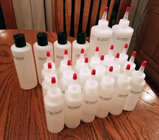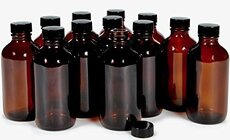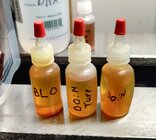On the subject of Coleman Fuel. I asked the nearby Ace if they could order any, and the guy I was chatting with said he should be able to and would look into getting some into the store. While we were chatting I asked him if he knew the exact composition of the fuel, which he did not, but I was still curious when I got home, and looked it up. Apparently its also called "white gas", and it IS a highly refined form of naphtha. It is explicitly formulated as a fuel, though, and it apparently has rust inhibitors in it (one of the few addins in the formula.) I probed ChatGPT about the nature of Coleman Fuel and its viability as a solvent. It seems the ChatGPT models are particularly tuned to frequently warn users about solvents, VOCs, etc. so it was a rather annoying "conversation", however in the end I ultimately had it give me a more detailed breakdown of the differences between VM&P naphtha and Coleman Fuel, and the rust inhibitor was ultimately the main difference that the model thought might be an issue with using Coleman Fuel as a solvent for oil-based finishes, varnish making, etc. Ironically, though, at the end of that part of the chat, the model ALSO said one of the key concerns with VM&P naphtha is that it does NOT have rust inhibitors, which are a concern since it is most often sold in metal cans...
I probed the model a bit more about the consequences of rust inhibitors as thinners or solvents for oil based finishes or for varnish making. Its response was that they could inhibit the curing of the oils, or otherwise interfere with the compositional quality of a varnish formulation, as rust inhibitors often include compounds that are likely to be incompatible:
- Chemical Incompatibility: Common rust inhibitors include a wide range of chemicals such as amines, morpholine, phosphates, silicates, and chromates, many of which may not be compatible with the resins and oils used in varnishes and oil-based finishes. Introducing these foreign chemicals can destabilize the formulation.
Other issues, depending on exactly what the rust inhibitor compounds are, could affect adhesion of the finish to the wood, coat the finish with layers that block oxygen affecting curing properly, or affect the stability or longevity of varnishes due to incompatible chemicals.
I proceeded to ask about DNA as a solvent/thinner, and the response was that its basically only viable as a cleaning agent and for shellac based finishes, but that it was not a viable oil thinner due to similar reasons as above: The denaturing compounds are often incompatible with oils. I don't think I've ever used DNA with oil based finishes...I pretty much only use it to clean off the wood after sanding and as a shellac thinner.
I then asked about Turpentine. Interestingly, this was the ONLY solvent that the model thought was a valid and viable thinner for oil-based finishes (at least at this point). Reasons were: no unwanted or incompatible additives, it was usually a fairly pure and naturally sourced formulation; it is highly compatible with the oils and resins often found in varnishes. The only drawbacks, of course, were the highly volatile nature of the VOCs in Turpentine and the need to work with it in areas with fresh air to avoid health issues. It mentioned that Turpentine and Mineral Spirits were the best options for thinning oil based finishes and varnishes, and better than VM&P naphtha in general. Naphtha it considered a "drying accelerator" which was actually something I was aware of and one of the original reasons I used it with some finishes.
Finally, I asked about the Klean Strip Paint Thinner that I bought based on comments earlier in the thread, and listed the compounds in it from the data sheet, since it had mentioned mineral spirits. The model seemed to think, based on all the compounds I pasted in from the product's SDS, that it was a superb oil-based finish and varnish thinner, that all the compounds were proper VOCs and would evaporate at a fairly optimal rate to help the finish dry properly and on an appropriate timeframe. It noted that none of the compounds were chemically incompatible, that they were optimal solvents for many of the compounds used in varnishes. The model explicitly listed off most of the natural resins in classic varnishes...I explicitly asked about polyurethanes and other modern varnishes, and it stated that the solvency power of this paint thinner was still optimal for use with polyurethane, spar urethane, etc.
So I guess, since it seems to be available at the nearby Ace, instead of trying to hunt down fuel naphtha as a solvent for oil based finishes, I'll stick with the Paint Thinner and Turpentine. Mineral spirits seems to be the optimal thinner for oil based finishes, and the Klean Strip Paint Thinner "Made from Mineral Spirits" is the optimal thinner. Not just as a "stripper" of finishes, but a thinner as well. The can of this Paint Thiner was also one of the cheaper solvents out there, it was only nine bucks!







